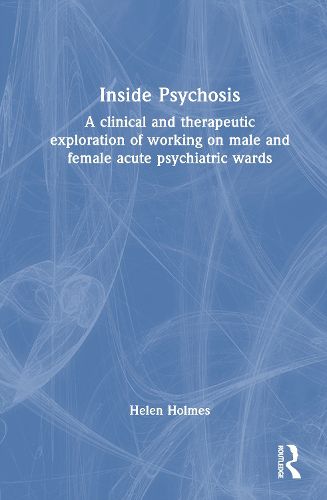Readings Newsletter
Become a Readings Member to make your shopping experience even easier.
Sign in or sign up for free!
You’re not far away from qualifying for FREE standard shipping within Australia
You’ve qualified for FREE standard shipping within Australia
The cart is loading…






This book offers an introductory overview of treatment of psychosis in in-patient acute ward settings, looking at both male and female wards.
Taking a broadly psychoanalytic perspective, the book explores the organizational dynamics on male and female acute wards, exploring both patient and staff dynamics. Containing detailed case studies from across male and female psychiatric wards in London, the author sets out how psychoanalytic concepts such as transference, questions of trauma, and issues of gender can shape both the presentation of psychosis and our understanding and treatment of it. The book then explores the part played by religion in psychosis and equips readers with ideas for future practice and training on psychosis.
With clear guidance on how to understand and work with psychosis in an inpatient setting, and how many unconscious factors can affect patients and staff, this is key reading for psychiatrists, psychoanalysts and therapists, clinical psychologists, and other mental health professionals working in inpatient acute care and community settings.
$9.00 standard shipping within Australia
FREE standard shipping within Australia for orders over $100.00
Express & International shipping calculated at checkout
This book offers an introductory overview of treatment of psychosis in in-patient acute ward settings, looking at both male and female wards.
Taking a broadly psychoanalytic perspective, the book explores the organizational dynamics on male and female acute wards, exploring both patient and staff dynamics. Containing detailed case studies from across male and female psychiatric wards in London, the author sets out how psychoanalytic concepts such as transference, questions of trauma, and issues of gender can shape both the presentation of psychosis and our understanding and treatment of it. The book then explores the part played by religion in psychosis and equips readers with ideas for future practice and training on psychosis.
With clear guidance on how to understand and work with psychosis in an inpatient setting, and how many unconscious factors can affect patients and staff, this is key reading for psychiatrists, psychoanalysts and therapists, clinical psychologists, and other mental health professionals working in inpatient acute care and community settings.